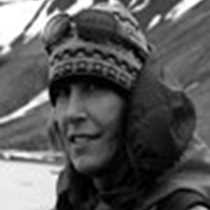Bahia San Gabriel, Isla Espiritu Santo
I think that all aboard the National Geographic Sea Lion can agree we’ve started the trip off right: clear skies, long beaches, and opportunities to explore by foot, kayak, and fin. This morning, we dropped anchor in beautiful Bahia San Gabriel, a jewel of a harbor on Isla Espiritu Santo. With no time wasted, kayaks were on the beach for ready paddlers and land-based explorers set off into the desert.
Kayakers paddled to a long strip of mangroves growing from a breakwater put in place by long-gone settlers. Old stone walls lined the shore as well—up until 1913, there was a pearl fishery based in this cove. The pearls from the waters around La Paz are legendary and history swirls around them; indeed, John Steinbeck, when he traveled these waters, heard one story of wealth and greed that became his novel The Pearl.
But pearls weren’t on our minds as we paddled. Instead, we were captivated by the rustlings and clackings of a hundred or so magnificent frigate birds roosting in the mangroves. Supreme aerialists that make a living by snatching fish from the surface of the water while in flight, frigate birds are said to be the only bird that can ride out a hurricane on the wing. Some of them, like the juvenile above, were as curious about the bright plastic things splashing nearby as we were about it.
Ashore, walkers reconstructed what the tide had left, from squid beaks to fish skeletons to bird bones. Cardon cacti edged the salt flats as did many other spine-rich desert plants. The rocks themselves were an adventure—turning over a few stones revealed beetles and scorpions in the cool shade.
After lunch, we shifted our attention to the northwest corner of the bay, anchoring a Zodiac for snorkeling. Sea cucumbers, flower urchins, Cortez rainbow wrasse, and even the sneaky, incognito stone scorpionfish were among the discoveries made by snorkelers. After exploring the vivid sea for ourselves, we enjoyed images Brian Skerry, a National Geographic photographer, shared with us of his own underwater wanderings. With such a day to begin our trip, we headed into dinner ready to rest and prepare for the adventures to come.
I think that all aboard the National Geographic Sea Lion can agree we’ve started the trip off right: clear skies, long beaches, and opportunities to explore by foot, kayak, and fin. This morning, we dropped anchor in beautiful Bahia San Gabriel, a jewel of a harbor on Isla Espiritu Santo. With no time wasted, kayaks were on the beach for ready paddlers and land-based explorers set off into the desert.
Kayakers paddled to a long strip of mangroves growing from a breakwater put in place by long-gone settlers. Old stone walls lined the shore as well—up until 1913, there was a pearl fishery based in this cove. The pearls from the waters around La Paz are legendary and history swirls around them; indeed, John Steinbeck, when he traveled these waters, heard one story of wealth and greed that became his novel The Pearl.
But pearls weren’t on our minds as we paddled. Instead, we were captivated by the rustlings and clackings of a hundred or so magnificent frigate birds roosting in the mangroves. Supreme aerialists that make a living by snatching fish from the surface of the water while in flight, frigate birds are said to be the only bird that can ride out a hurricane on the wing. Some of them, like the juvenile above, were as curious about the bright plastic things splashing nearby as we were about it.
Ashore, walkers reconstructed what the tide had left, from squid beaks to fish skeletons to bird bones. Cardon cacti edged the salt flats as did many other spine-rich desert plants. The rocks themselves were an adventure—turning over a few stones revealed beetles and scorpions in the cool shade.
After lunch, we shifted our attention to the northwest corner of the bay, anchoring a Zodiac for snorkeling. Sea cucumbers, flower urchins, Cortez rainbow wrasse, and even the sneaky, incognito stone scorpionfish were among the discoveries made by snorkelers. After exploring the vivid sea for ourselves, we enjoyed images Brian Skerry, a National Geographic photographer, shared with us of his own underwater wanderings. With such a day to begin our trip, we headed into dinner ready to rest and prepare for the adventures to come.




